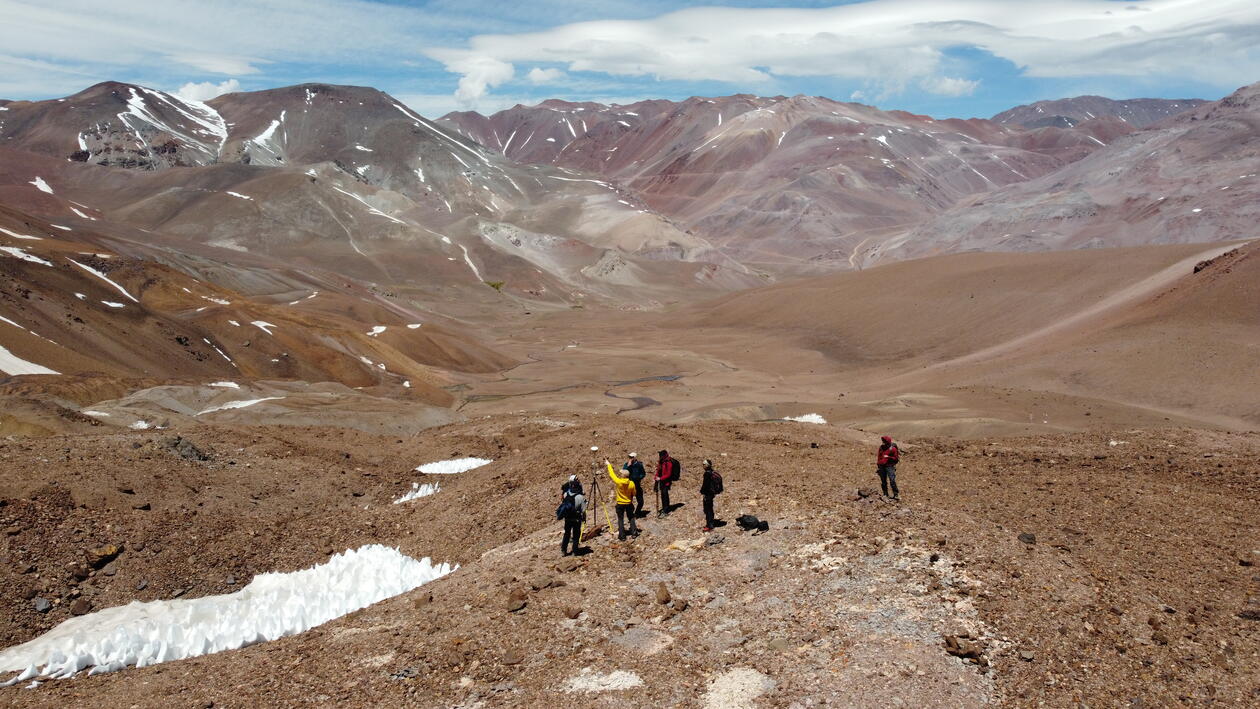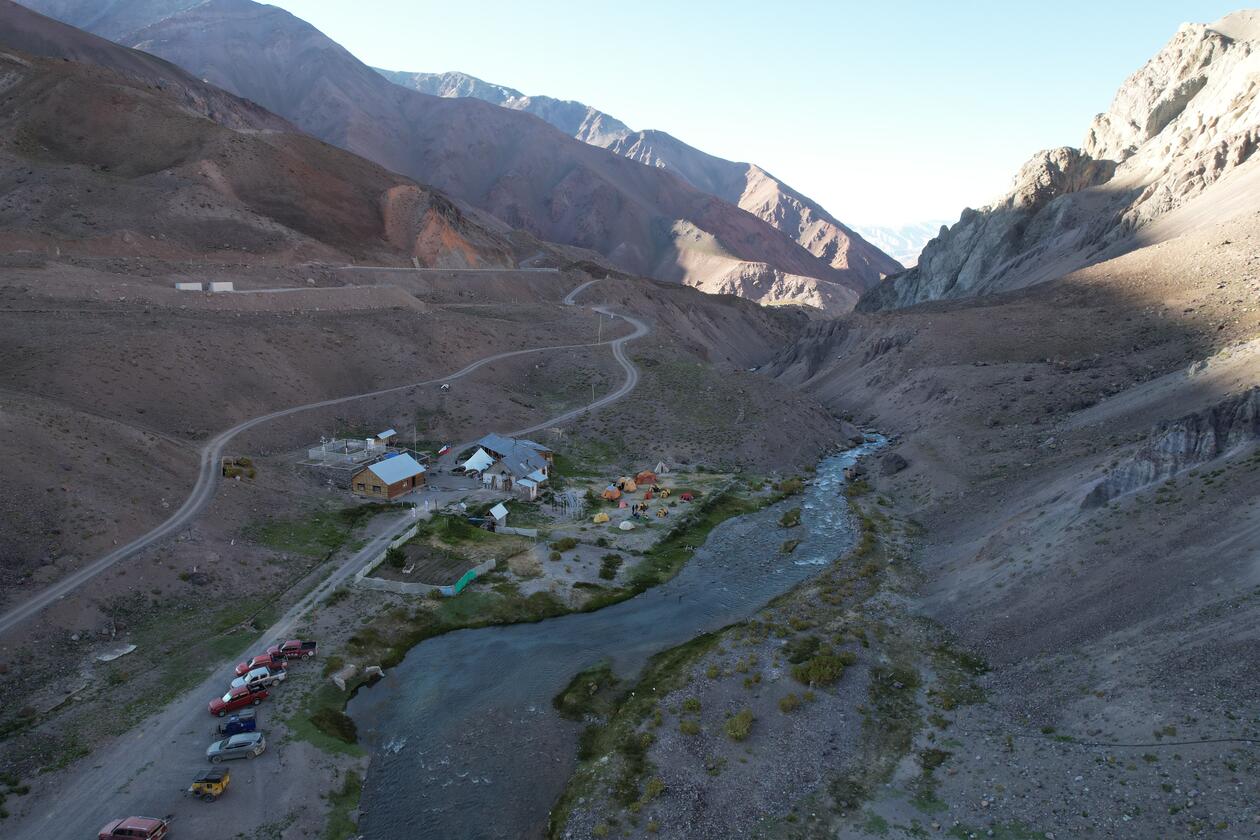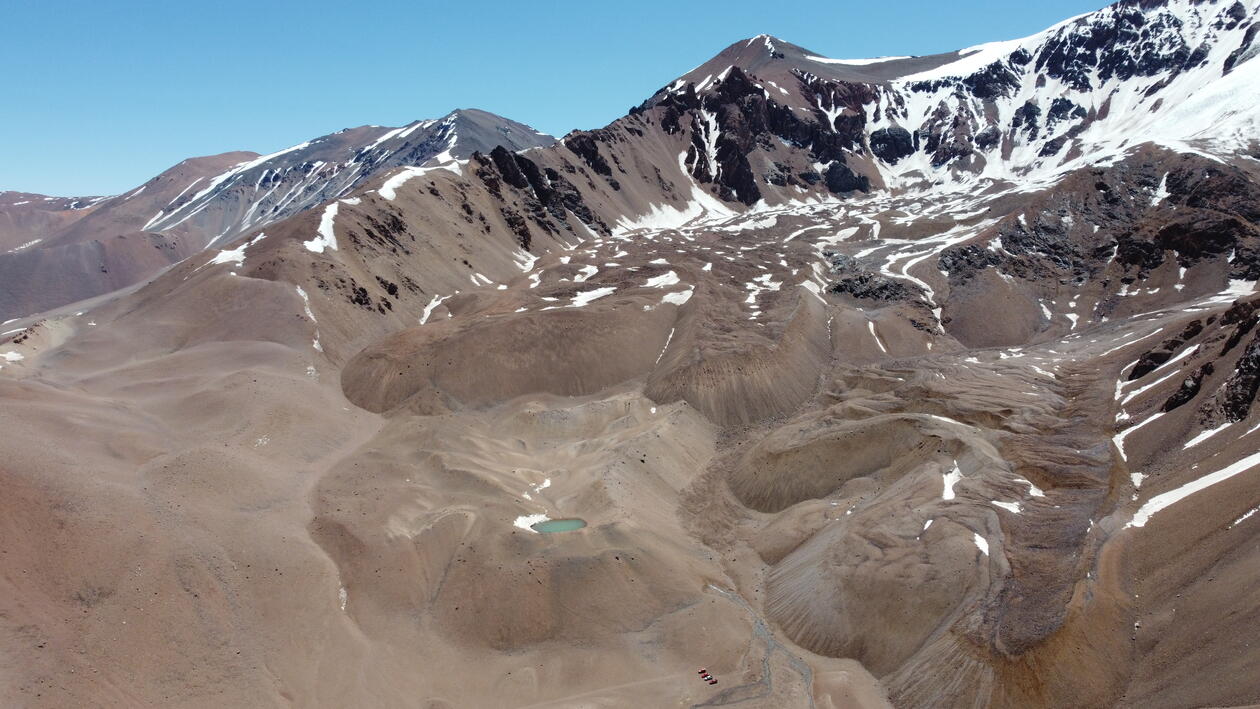Summer school in December
Us, Isaac, Lina and Mara, are three physical geography master students that had a chance to participate in summer school this December, which took place in Chile.

Main content
A group of total 20 students from 12 different countries learned about water resources that are found in the Elqui river valley situated in semi-arid Andes. Here, the cryosphere provides up to 80% of the streamflow which farmers further down are highly dependent on. We also learned that the conventional glacier monitoring methods using stakes could not be used in this context, therefore, we practiced using satellite as well as UAV (unmanned aerial vehicle, or drone) imagery. This data was used to identify changes in the Tapado glacier complex which includes blue ice, debris covered and rock glaciers. During the fieldwork, we also performed geomorphological mapping and measured coordinates of velocity points, what was relevant for the already ongoing research. The last day of the summer school was used for presenting our findings to researchers at CEAZA.
Prior to us heading to the mountains, Benjamin Aubrey Robson (UiB, Earth Science) and Gidske Leknæs Andersen (UiB, Geography), together with Diego Cusicanqui (Université Grenoble Alpes) thought us methods for extracting glaciological information from the acquired imagery. Jostein Bakke and Pål Nielsen Ringkjøb (UiB, Earth Sciences) also shared their expertise out in the field, together with Shelley McDonnel (CEAZA, Chile and Lincoln University, New Zealand) who introduced us to the issues regarding water resources and provided further context to the topic.
Work in high altitudes (3000 – 4700 m) was new to majority of the group and it came with some minor challenges that we were made aware of and prepared for. The main issue was that the atmosphere becomes thinner in such heights what meant that we had to consciously slow down our movement to not get a headache or run out of breath. The second challenge, in our opinion, was having constantly apply sunscreen and make sure that no skin was left unprotected against the ultra-high solar radiation.
Overall, it was a great experience, we expanded our academic network and learned methods that are relevant for our work.


